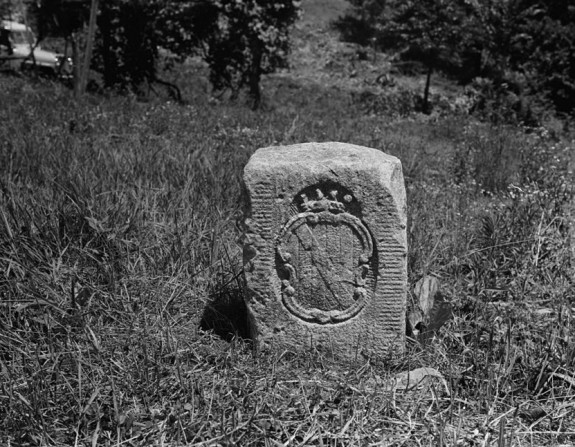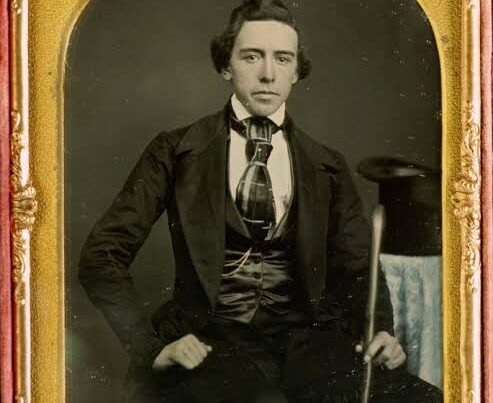The complex issues which have and continue to divide America’s North and South have a long and at times violent history, as well as having involved an extensive list of differences. Almost a century before the War Between the States and even prior to the establishment of a formal geographic boundary roughly dividing the two sections along the thirty-ninth parallel, there had been open warfare between Northern and Southern interests. In 1730, a border dispute arose along the Susquehanna River in the Conejohela Valley that separated the British Colonies of Maryland and Pennsylvania. At that time, groups of German farmers from Pennsylvania crossed the river and began settling on land claimed by Maryland. The basic problem involved the original land grants issued to the two Colonies by the British crown, Maryland’s in 1632 and Pennsylvania’s in 1681. The Pennsylvania grant, however, was based on an inexact map of the territory along the thirty-ninth parallel, one which actually placed the Philadelphia area within the Maryland Colony. Based on their understanding of the border in the Conejohela Valley, the Pennsylvanians felt they had a legal right to the land upon which they had settled. The number of incidents in that area continued to grow during the next few years, and finally erupted into an armed conflict in 1736 known as Cresap’s War that involved militias from both Colonies. The actual spark that ignited the two-years of open warfare was when a Maryland ferryman on the Susquehanna River, Thomas Cresap, fought back after the five hundred acre property ceded to him by the Maryland government had been invaded by Pennsylvanian settlers. The incident finally drew in the militias from both Colonies and resulted in a number of armed skirmishes all along the disputed border.
The actual hostilities ended in 1738 after Maryland’s proprietary governor, Frederick Calvert, finally agreed to arbitration, but even so, the legal battles over the border continued for almost three decades until, in 1763, the two Colonies decided to settle the matter by jointly establishing a formal line of demarcation. As there were no adequately qualified surveyors available in either Colony at that time, the Calverts of Maryland and the Penn family of Pennsylvania, at a cost of three thousand five hundred pounds, privately employed two renowned English professionals, Charles Mason and Jeremiah Dixon, to carry out the project. The border survey that also established the official boundary between the Colonies of Maryland and Delaware was completed in 1767 and is, of course, known today as the Mason-Dixon Line. The two hundred forty-four mile line, which is actually about fifty miles north of the thirty-ninth parallel, had stone markers bearing the coats of arms of both the Calvert and the Penn families placed every five miles along the boundary, some of which still exist today within protected enclosures. Even though the border question was amicably settled by merely drawing a mutually agreed upon line on a map, other differences and disputes that later developed between the areas north and south of that line were not.
During the following century, the thirteen British Colonies, through resolution and revolution, became free of English rule and joined together to create the United States. This well-intended union, even though made even more perfect in 1787 by a Constitution, began to fray and draw apart in the early years of the Nineteenth Century. Issues such as unfair tariffs on Southern goods that provided the bulk of the new nation’s exports, the growing infringement by the Federal government of the sovereign rights of the States and the controversy over the extension of slavery into newly established territories all contributed to an ever-widening sectional rift. In less than a hundred years, the peacefully drawn Mason-Dixon Line became a raging battle line when the Southern States decided that their differences with the North had finally become irreconcilable, and adopted what they considered to be the constitutional right to abrogate their partnership with the Union and reform as the Confederate States of America. A dictatorial Federal government felt otherwise, however, and elected to send its armies across the thirty-ninth parallel into the new American nation and by force of arms reunite the country. President Lincoln’s stated rationale for such an act of undeclared war was that the Southern States were, as was the case with the thirteen British Colonies in 1776, in open rebellion against their country and posed an actual military threat to the nation.
While Lincoln may have considered that the Union Army could quickly crush the so-called rebellion and bring the offending States to heel, history, of course, shows that his assessment was tragically incorrect. It is also quite evident today that Lincoln chose to ignore the very real possibility that rather than the localized civil strife he said was required to save the Union, he was also risking a potential inter-continental conflict involving Great Britain and France should they go ahead with their plans to intervene on the side of the Confederacy. Moreover, such a possibility would also create a dangerous second front along the entire Canadian border, as well as opening up a threat by Mexico to regain its lost territories in the American west. At the time, the Mexican government under then President Benito Juarez was both friendly toward the Union and hostile to the Confederacy, so much so that when the commisioner President Davis sent to Mexico in early 1861 to negotiate a treaty, Colonel John T. Picket of Kentucky, the former United States consul to the West Indies, he was arrested and deported. Even so, it should certainly have been evident to Lincoln that Juarez’s power was swiftly evaporating, and that Mexico would soon fall victim to the overwhelming power of the English, French and Spanish forces that were already being assembled to invade the country later that year.
Following the cessation of hostilities in 1865, the undeclared War Between the States was concluded without even the pretense of a formal armistice or treaty of peace. . . merely surrender and occupation. While peace and the Union had both been restored, animosity still lingered for many years on both sides of the Mason-Dixon Line following the twelve years of the South’s Federal occupation. Finally, however, a growing sense of reconciliation began to develop throughout America, a feeling that continued well into the Twentieth Century. Unfortunately, such amity began to change a few decades ago when some civil-rights groups in the South started agitating for the removal of the Confederate Battle Flag from public display, including the State Flags of Georgia and Mississippi . . . the first falling prey to political correctness, the latter still proudly waving on high. Since then, what began simply as a limited anti-Confederate Flag movement has gained nationwide momentum, and has now been transformed into a thunderous, generally anti-Southern outcry centered on not only the Confederate flag, but all of the Confederacy’s leaders and citizens, slaveholder or not. Such protests now also attack all the Confederacy’s many memorials and monuments wherever they might be located, North or South, and much of the South’s history, culture and heritage as well. Moreover, this senseless rage has even been expanded to cover anyone who, in any period, was ever connected with slavery in any manner, including many of the nation’s founding fathers. Thus, yesterday’s call for the erasure of the Confederate flag has progressed into such cries today that the figures of President Jefferson Davis and Generals Robert Lee and Thomas Jackson be blasted from the face of Stone Mountain in Georgia, and will perhaps even become tomorrow’s demands for the images of Presidents George Washington and Thomas Jefferson to be pried from their places of honor atop Mount Rushmore in South Dakota.
Forgetting for a moment the current North-South divisions in America, an eerie parallel, if you will excuse the pun, can be drawn by shifting the scene seventy miles southward to the thirty-eighth parallel and then extending that line all the way across the Pacific Ocean to the Korean peninsula. There, at the end of another major war, a nation was also bisected into North and South entities by a geographic line and another dictatorial regime from the North soon sent its armies into its neighbor to the South without a declaration of war to forcibly reunite the country. The latter conflict was also concluded without a formal treaty of peace, and was also started with little thought given that such an action would likely create a far wider conflict . . . even possibly a third world war. A similar situation, of course, still exists today, but this time the threat is even more dire, with both sides being armed with far more powerful nuclear weapons that can be hurled from one continent to another. Hopefully, the issues which now divide the people north and south of the two parallels in both America and Asia will some day be resolved and the rancor laid to rest.







